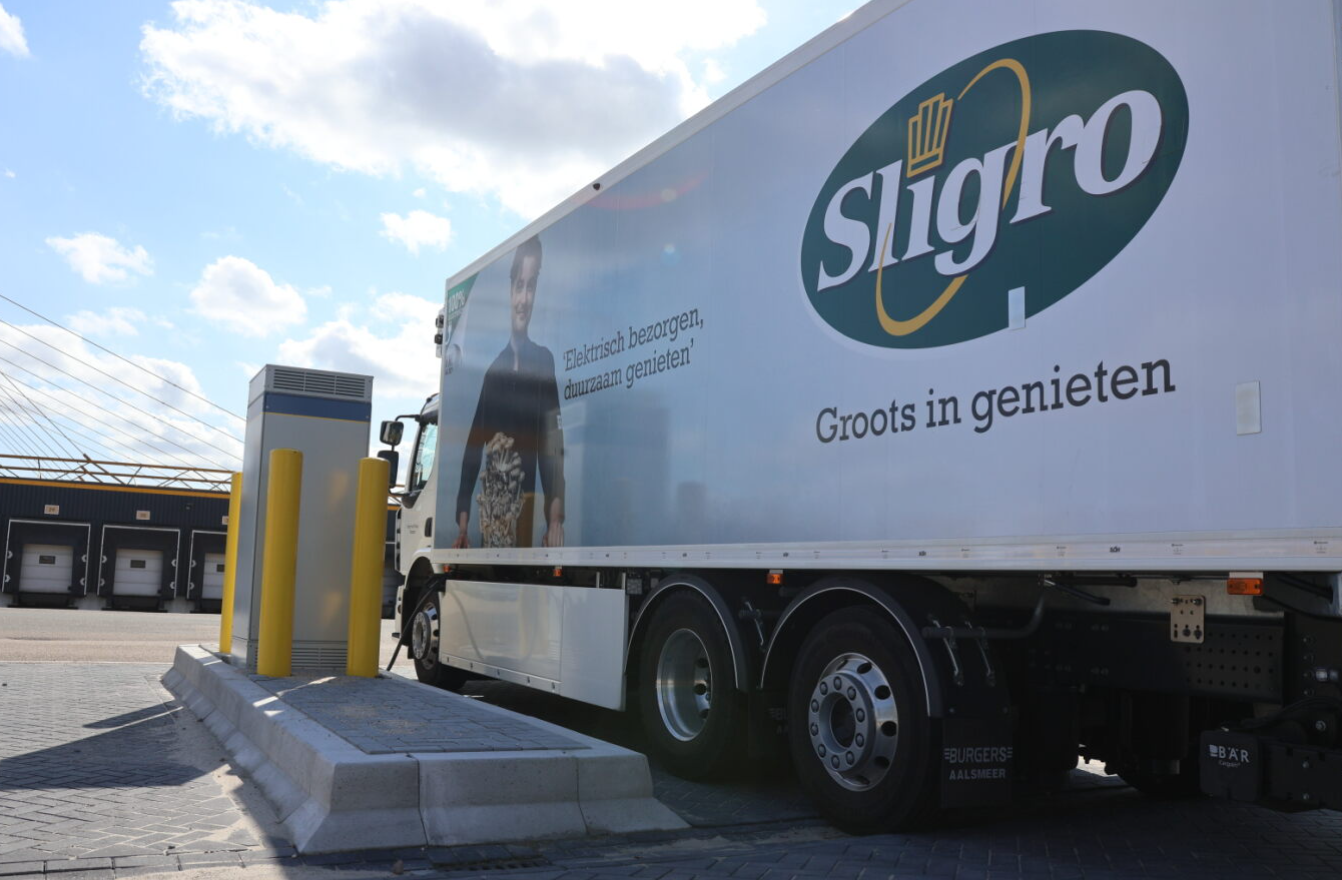Rotterdam’s regional public transport operator, RET Rotterdam, was looking for a suitable charging infrastructure to electrify their bus fleet of 55 VDL Citea’s SLF-120. The 55 busses and 8 charging stations needed a charging solution that was unobtrusive, and fit in well with the city’s infrastructure and aesthetics.
Firstly, chargers were placed underground at Rotterdam CS. This solved the problem of keeping the chargers out of view but presented challenges when engineers were confronted with the existing thick maze of underground cables to serve the station and metro, restricting available space for installation.
Heliox also installed cooling systems to lower the heat generated by the chargers and maintain an optimum temperature. Installations were carried out at night to impact daily operations as little as possible.
For overhead charging solutions, Masts holding the pantograph were specially designed to fit traditional lamp post design, seamlessly aligning with the street view. In some cases, the distance between charger and masts was exceptional; in Vlaardingen West, a unique cable path of 135 meters was designed and installed. All 55 busses are charged via pantograph, the so-called Bus-Up system.
Two methods are used: depot charging at the Kleiweg in Rotterdam (thirty-two 2x30 kW Dynamic Charging chargers) and opportunity charging (sixteen 300 kW Chargers) at different locations in the three cities. The project included the first installation of the Heliox Dynamic, a charging solution that can switch from one to two busses for simultaneous charging.
Heliox is further pushing the limits of e-mobility to contribute to a sustainable future for the next generations. The project demonstrated how Heliox provided flexibility within the specified parameters and, where necessary, could respond with customized solutions. This is RET’s first step towards a 100% zero-emission bus fleet in 2030.
Heliox and TU/e aim to develop an integrated solution that makes charging heavy electric vehicles accessible without negative consequences for local electricity networks. Together, we want to achieve this by developing and demonstrating a new, multiple and dynamic charging system for heavy electric vehicles that is equipped with software-controlled stabilization to absorb disturbances on the local energy grid.
The intended system will consist of a dynamically configurable charging system based on modules that can be connected in parallel, each with three 60 kW outputs. With this they want to be able to distribute the loading capacity dynamically over several vehicles. The charging system can therefore be used for opportunity charging up to 360 kW for a single vehicle as well as for regular charging of several vehicles.
In addition, smart software and a microcontroller board are being developed. The converter of the charging system can be used via this software to compensate for grid disturbances. The disturbances are neutralized via a low impedance path. This allows losses on the grid to be converted into usable energy, while improving the voltage quality of the grid. In fact, the system completely takes over the function of current power filters on the basis of smart control.
Rotterdam’s regional public transport operator, RET Rotterdam, was looking for a suitable charging infrastructure to electrify their bus fleet of 55 VDL Citea’s SLF-120. The 55 busses and 8 charging stations needed a charging solution that was unobtrusive, and fit in well with the city’s infrastructure and aesthetics.
Firstly, chargers were placed underground at Rotterdam CS. This solved the problem of keeping the chargers out of view but presented challenges when engineers were confronted with the existing thick maze of underground cables to serve the station and metro, restricting available space for installation.
Heliox also installed cooling systems to lower the heat generated by the chargers and maintain an optimum temperature. Installations were carried out at night to impact daily operations as little as possible.
For overhead charging solutions, Masts holding the pantograph were specially designed to fit traditional lamp post design, seamlessly aligning with the street view. In some cases, the distance between charger and masts was exceptional; in Vlaardingen West, a unique cable path of 135 meters was designed and installed. All 55 busses are charged via pantograph, the so-called Bus-Up system.
Two methods are used: depot charging at the Kleiweg in Rotterdam (thirty-two 2x30 kW Dynamic Charging chargers) and opportunity charging (sixteen 300 kW Chargers) at different locations in the three cities. The project included the first installation of the Heliox Dynamic, a charging solution that can switch from one to two busses for simultaneous charging.
Heliox is further pushing the limits of e-mobility to contribute to a sustainable future for the next generations. The project demonstrated how Heliox provided flexibility within the specified parameters and, where necessary, could respond with customized solutions. This is RET’s first step towards a 100% zero-emission bus fleet in 2030.























